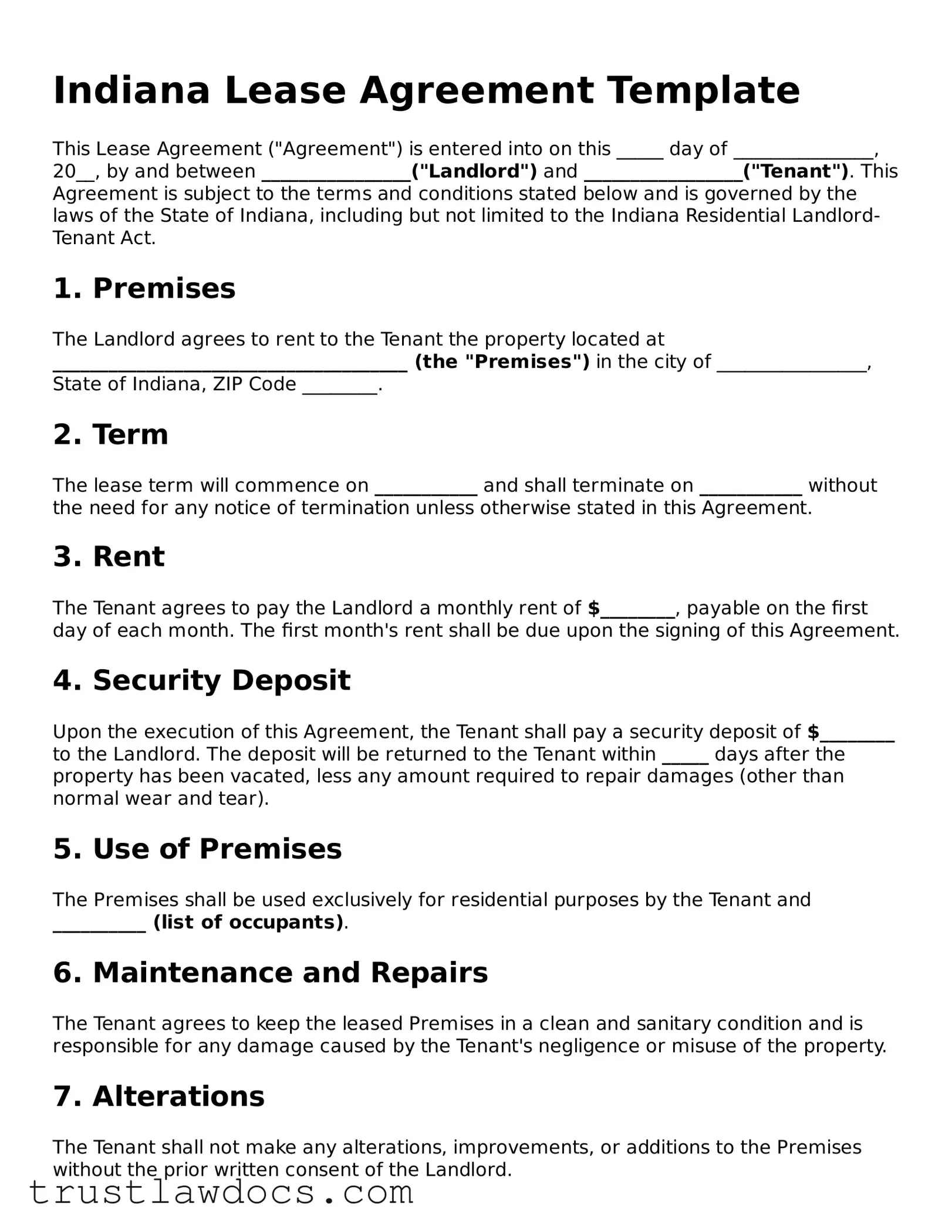What is an Indiana Lease Agreement?
An Indiana Lease Agreement is a legally binding contract between a landlord and a tenant. It outlines the terms and conditions under which the tenant can rent property in Indiana. This agreement includes specifics such as rent amount, security deposit, lease duration, and rules about pets, maintenance, and utilities.
Do I need a written lease agreement in Indiana?
While verbal agreements can be legally binding, it is highly recommended to have a written lease agreement. A written contract provides a clear record of the terms agreed upon by both parties and can help prevent misunderstandings and disputes in the future.
What should be included in an Indiana Lease Agreement?
An Indiana Lease Agreement should include details of the landlord and tenant, property description, rental amount, security deposit, lease term, policies on pets and smoking, maintenance responsibilities, and any other conditions or rules relevant to the tenancy.
How long can a lease agreement be in Indiana?
Lease agreements in Indiana can vary in length. The most common lease term is 12 months, but shorter or longer periods can be agreed upon by both parties. Regardless of the term, the lease should specify the starting and ending dates.
Can a landlord enter the rented property without permission in Indiana?
Indiana law requires landlords to provide reasonable notice (usually 24 hours) before entering the rented property, except in emergencies. This is to respect the tenant’s privacy rights. The specific conditions under which a landlord can enter must be outlined in the lease agreement.
What are the rules regarding security deposits in Indiana?
In Indiana, there are no statutory limits on the amount a landlord can charge for a security deposit. However, it must be returned to the tenant within 45 days after the end of the lease, minus any deductions for damages beyond normal wear and tear or unpaid rent.
Can a lease agreement be terminated early in Indiana?
Yes, but the conditions for early termination should be included in the lease agreement. Common reasons include military service, breach of lease by the landlord or tenant, or mutual agreement. Without a just cause, terminating a lease early could result in penalties.
Is renter’s insurance required in Indiana?
Indiana law does not require tenants to have renter’s insurance; however, a landlord may require it as part of the lease agreement. It's a good idea for tenants to obtain renters insurance to protect their personal property against theft, fire, or other damages.
What happens if a tenant violates a lease agreement in Indiana?
If a tenant violates their lease agreement, the landlord may have the right to issue a notice to cure the violation or terminate the lease. Serious violations, such as non-payment of rent or illegal activities on the premises, may lead to eviction proceedings.
Are there any rent control laws in Indiana?
Indiana does not have rent control laws. This means landlords can set rental prices as they see fit. However, rent increases are usually subject to the terms of the lease, and the landlord must provide adequate notice before raising the rent according to the lease agreement.
